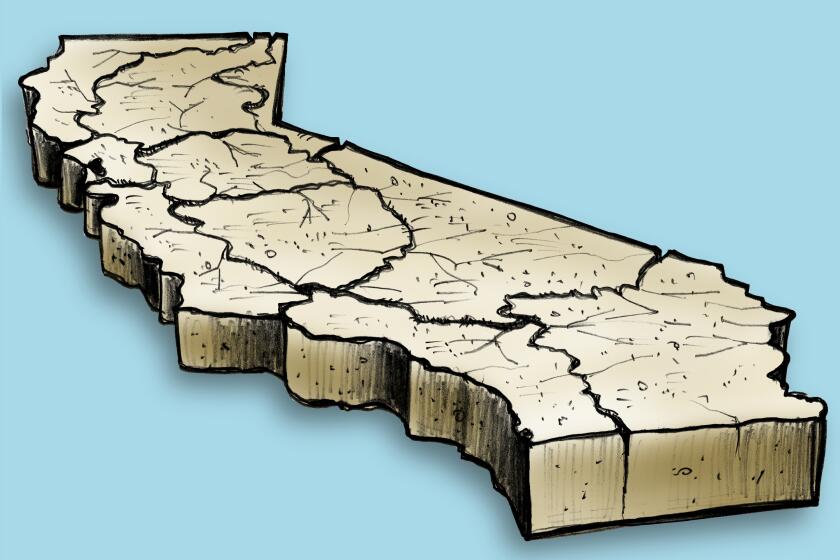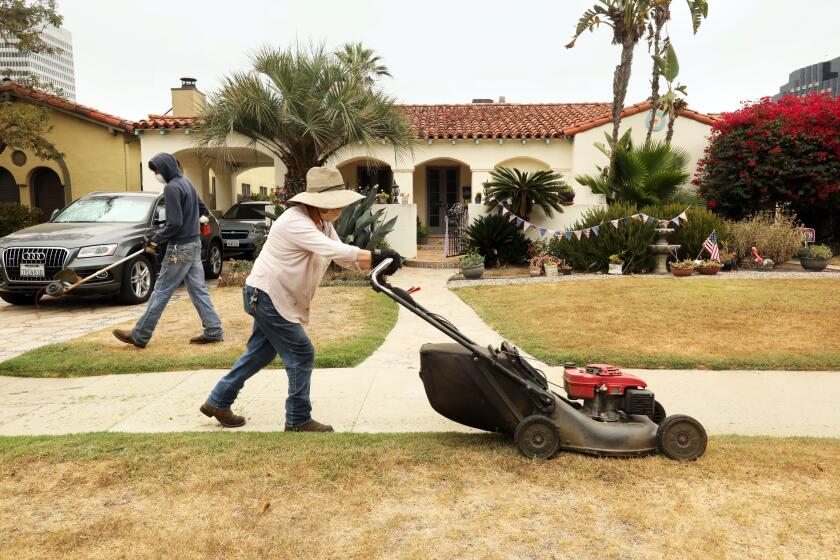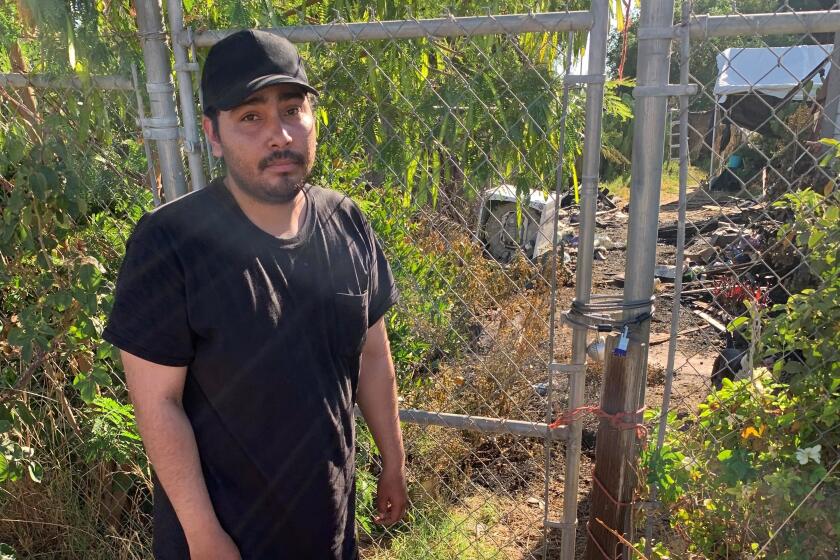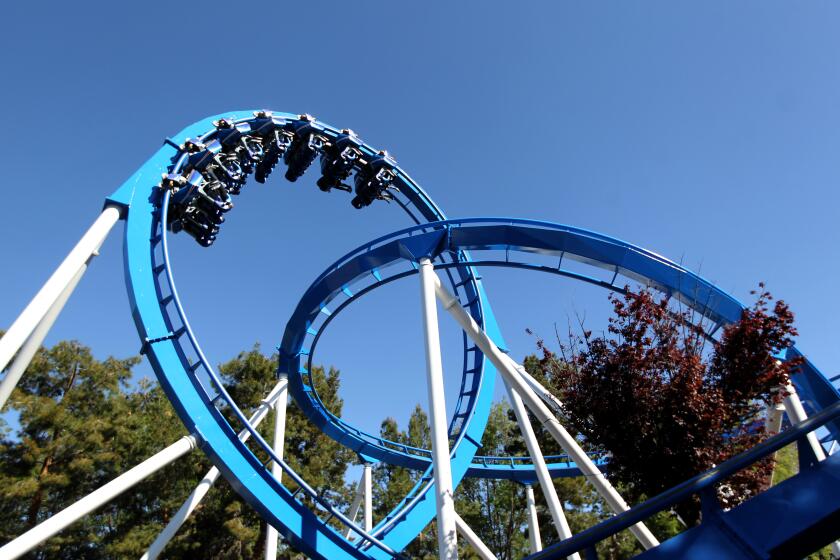Wild Rivers returns to Irvine after 11 years, with promise to conserve water
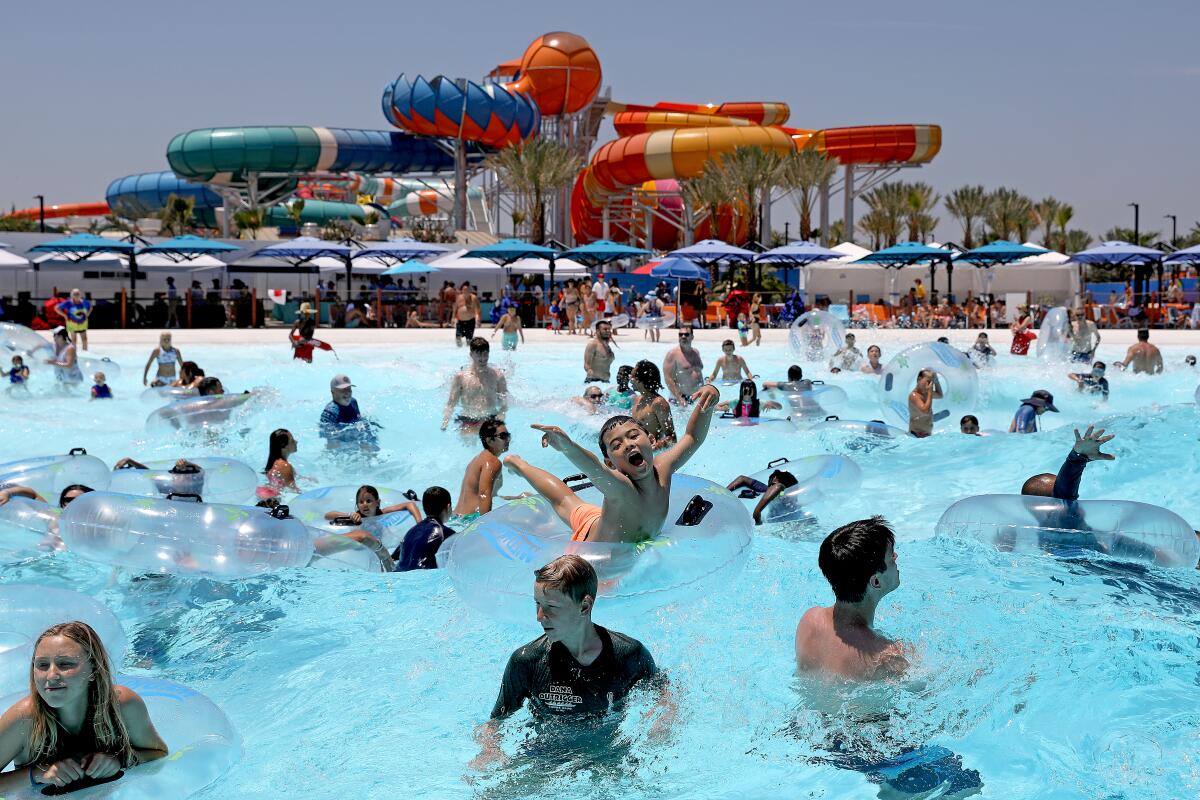
- Share via
Starting Thursday, Southern Californians will see triple-digit temperatures as a heat wave sweeps into the weekend. The high temperatures will peak Saturday, and no one could be blamed for wanting to cool off in a pool or swish down a water slide.
Earlier this month, Wild Rivers water park in Irvine reopened after an 11-year hiatus. The newly constructed 20-acre water park is nearly twice the size of its earlier iteration, but Wild Rivers reemerges in a drier California, at a time when the state’s largest reservoirs are at historic lows and water restrictions are in effect across the Golden State.
The amount of water needed to fill the park is “approximately the same amount of water it takes to fill two Olympic-sized swimming pools,” according to John Fabris, a spokesman for the Irvine Ranch Water District, which supplies the park.
“The new location was built with brand-new equipment that has a robust filtration treatment system in it, on site, that allows them to reuse the water for the slides and rides over and over again,” he said.
The latest maps and charts on the California drought, including water usage, conservation and reservoir levels.
As for the optics of opening a water park during a drought, Fabris said the agency conducted water supply assessments and determined that it had enough water to cover the project as well as all “existing and planned uses for customers” for at least the next 20 years.
“It’s understandable,” he said of the question, “but it’s also a popular attraction for the community. And having people gathering in one place, beating the heat in a situation where the water is used efficiently, ultimately, is a lot more water efficient than it was when my kids were little and we used to fire up the slip and slide in the backyard and let it run all day long.”
The majority of California is in the middle of a severe drought, according to the U.S. Drought Monitor from the University of Nebraska-Lincoln. Water restrictions dot the state’s landscape and brown lawns have appeared in response.
Preliminary data for June, which represents about 30% of the state’s population, show water savings just over 7% when compared with June 2020, according to the California State Water Resources Control Board. Other parts of the region are also seeing success with the water restrictions that started last month.
Demand for water decreased 9% in June compared with the same month last year, but some Angelenos are more on board with the restrictions than others.
At the end of 2011, California entered into a nearly seven-year drought. That same year Wild River closed its doors, and although the new iteration of the park is larger, the water district says, thanks to its upgraded amenities, the park will use 10% less water than the old location. The questions about opening a water park during a drought are fair, said Eric Gieszl, director of guest experience at Wild Rivers.
“I can understand where some individuals may be concerned,” Gieszl said. “But when you learn the actual facts of what our usage is and compare it to other uses of water, then I think people suddenly realize that our usage is really insignificant in the big picture.”
The park fills its pools once at the start of the summer season and recirculates the water through its filtration system and pumps, Gieszl said. Any additional water usage is to account for evaporation over the season, Gieszl said.
The park will also water the landscape with reclaimed water instead of domestic supplies, and the urinals at the park will be waterless. Wild Rivers will also be a major employer to teenagers over the summer and an economic driver for Irvine, Gieszl said. He compares the park’s draw of water to a golf course, which he says can only be enjoyed by a few people at a time.
“A lot of our guests were previous patrons,” Gieszl said. “And they’re back experiencing the park and many of them are bringing their children.”
Latino residents of East Orosi, southeast of Fresno, have seen their wells dry up before. This time, it left them powerless to fight a house fire.
Unlike some parts of the state that are heavily reliant on supplies from Northern California and the Colorado River, only 18% of Irvine’s water comes from out of the area, Fabris said, with 82% coming from groundwater and recycled water in Orange County.
However, the area is under Phase 2 water restrictions, which requires water-saving measures such as avoiding wetting down sidewalks and using hoses with automatic shut-off nozzles.
The park is subject to the same restrictions, Fabris said. It also is taking advantage of drought-tolerant landscaping and drip irrigation, he said, as well as the use of recycled water for the irrigation of turf.
As with residential customers, the park is also subject to “a budget-based water rates structure,” which charges them for actual water received.
“So Wild River, just like every customer, is motivated to be as efficient as they can with their water,” he said.
Santa Clara’s Great America amusement park will close in six to 11 years after being sold to Prologis, a real estate developer, for $310 million.
This weekend’s heat wave will linger into next week and pose serious health risks to vulnerable people.
A high-pressure system from the east will raise temperatures 4 to 8 degrees above average, according to the National Weather Service, and there will be a chance of monsoonal thunderstorms in the mountains and deserts. The triple-digit heat will creep into the San Fernando, Santa Clarita and Salinas valleys and near 105 degrees in the Antelope Valley.
“This type of heat is typical for this time of year,” said Tyler Salas, a meteorologist from the National Weather Service in San Diego. “It’s going to be hot. Relatively speaking, it will be less humid.”
All the latest on Orange County from Orange County.
Get our free TimesOC newsletter.
You may occasionally receive promotional content from the Daily Pilot.
